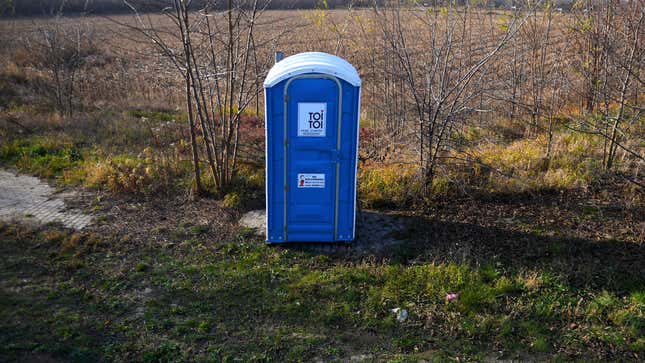
Humans have forced the Earth’s ecosystems to deal with a lot of crap, from deforestation and biodiversity loss to the climate crisis. Then, there’s our, um, literal crap, which a new study shows that the planet is surprisingly well-equipped to manage.
The study, published in the journal One Earth on Friday, marks the first-ever global assessment of the way nature deals with human waste. It finds nature is responsible for handling at least 41.7 million tons of our poop each year from just a few dozen cities, providing a huge service to humanity despite being largely out of sight and out of mind.
“To date, the role that ecosystems themselves play in treating human waste has been largely neglected,” the study says.
The researchers, who were based all around the world, examined human waste output from 48 cities across Africa, Asia, and the Americas which are together home 82 million people. To track what happens to all of it, they created excreta flow diagrams, which are known in the field of waste research and planning as—I swear—“shit flow diagrams.” These charts map the way wastewater and fecal sludge—that’s a term for “all liquid and semi-liquid contents of pits and vaults accumulating in on-site sanitation installations, namely latrines or septic tanks”—are treated in a given city. Lovely! To figure out cities’ poop flows, the authors used a combination of in-person interviews, informal and formal observations, direct field measurements, and official data.
The processes for the planet to deal with poop can be broken into two groups. Nature can act as a “pipeline,” transporting waste safely away from civilization—think rivers and streams. Ecosystems can also act as a “treatment plant,” wherein soil filters pathogens out of human waste. This is what makes natural pit latrines—which basically consist of a ditch in the ground with a concrete with a small hole in it—sanitary.
As gross as the work sounds, the findings could actually be crucial for global urban planners. The study found that ecosystems are responsible for at least 18% of sanitation services in the 48 locations examined. That means that nearly one fifth of human crap that gets sanitized—more than 70 million cubic feet (2 million cubic meters) or 800 Olympic pools worth of poo—without ever going through a sewage system.
“Nature can (and does) take the role of sanitation infrastructure,” Alison Parker, a senior lecturer in international water and sanitation at Cranfield University, who worked on the study, said in an email. “Whilst we are not marginalizing the vital role of engineered infrastructure, we believe a better understanding of how engineered and natural infrastructure interact may allow adaptive design and management, reducing costs, and improving effectiveness and sustainability, and safeguard the continued existence of these areas of land.”
It’s not that the researchers assume all of this is perfectly sanitary and just. According to the World Health Organization, 1 billion people globally (or 14% of the world’s population) only had access to natural pit latrines where waste is disposed in situ as of 2017. Another 673 million people generally defecated in the open whether it be in bodies of water or directly into foliage or on the ground.
The study calls for further research into whether any of the ways nature processes poop in one place results in water or soil contamination elsewhere—for instance, if rivers are transporting waste to other communities downstream. But the study does highlight that in assessing sanitation processes, natural systems must be taken into account.
“For example, near Kampala, Uganda, the Navikubo Wetland processes untreated wastewater from 100,000 households...and in doing so protects Murchison Bay and Lake Victoria,” the study says. In other parts of the world, it goes on to say, “the Mississippi River is diverted through coastal wetlands in the Gulf of Mexico in order to remove nitrogen. The Muthurajawela integrated coastal wetland system in Sri Lanka receives a high load of domestic wastewater, trapping nutrients while pathogenic organisms accumulate and decompose in the wetland’s bottom sediments.”
The study suggests that to help ensure all people have access to proper, sanitary waste management, ecosystems that filter out waste, like soil and rivers, must be protected.
“There needs to be a certain thickness of soil above the water table to filter the waste effectively,” Parker said in an email, suggesting that drought and erosion—both of which climate change increases—can make the ground less capable of doing so. “We are also concerned about the removal of wetlands where they are receiving untreated wastewater and protecting downstream communities.”